This site uses affiliate links, meaning that if you make a purchase through our links, we may earn an affiliate commission.
While the Pyramids of Giza often steal the limelight, there are lesser-known gems scattered across the desert sands, waiting to be unearthed by intrepid travelers. This blog post serves as your treasure map to a lesser-trodden path, guiding you on a DIY day trip from Cairo to Dahshur, Memphis, and Saqqara.
As the sun-drenched capital city of Egypt, Cairo pulsates with life, its chaotic streets a testament to the nation’s vibrant present. Yet, just beyond the city limits, an entirely different world emerges—one where time stands still, and the echoes of history resonate in the stillness of the desert air.
In this comprehensive guide, we will provide you with the tools and knowledge to plan an unforgettable trip to three historically significant but oft-overlooked destinations.
We will unravel the secrets of Dahshur, where you will stand in awe before the Bent Pyramid and the Red Pyramid, and explore the ancient capital of Memphis, where colossal statues whisper tales of a bygone era. Finally, we will take you to Saqqara, a necropolis of breathtaking beauty, housing the world’s oldest pyramid, the Step Pyramid of Djoser.
So, pack your sense of adventure and curiosity, for we are about to embark on a DIY trip that will unlock Egypt’s hidden treasures!
- 1. Sequencing Your Adventure: From Dahshur to Memphis and Saqqara
- 2. Map of the Day Trip from Cairo to Dahshur, Memphis, and Saqqara
- 3. Transportation Options for Your DIY Day Trip to Dahshur, Memphis, and Saqqara
- 4. Dahshur: Unveiling Egypt's Hidden Pyramids
-
- 4.1. The Bent Pyramid
- 4.2. The Red Pyramid
- 5. Memphis: Tracing Egypt's Ancient Capital
- 6. Saqqara: Unveiling Egypt's Oldest Pyramid and Necropolis
- 7. Intrepid Scout's Tips for DIY Day Trip from Cairo to Dahshur, Memphis, and Saqqara
Sequencing Your Adventure: From Dahshur to Memphis and Saqqara
For a truly immersive and awe-inspiring adventure, I highly recommend starting your journey in the enchanting land of Dahshur before making your way to Memphis and Saqqara on the return leg of your trip.
This strategic approach not only enhances the chronological and historical flow of your expedition but also ensures that you get the most out of your visit to these remarkable destinations.
- Why Dahshur First?
Dahshur, shrouded in an aura of mystique, holds the key to some of Egypt’s most iconic pyramid structures, including the enigmatic Bent Pyramid and the imposing Red Pyramid. By beginning your journey here, you’ll dive headfirst into the heart of ancient Egyptian pyramid construction.
As you stand in awe before the towering monuments in Dahshur, you will find yourself tracing the evolution of pyramid design and engineering.
The contrast between the Bent Pyramid’s unique, sloping angles and the Red Pyramid’s more conventional structure provides a captivating glimpse into the experimentation and mastery of ancient architects.
Starting your trip here allows you to delve into these architectural wonders with fresh eyes and an uncluttered perspective.
- The Unveiling of Memphis and Saqqara
After immersing yourself in the mysteries of Dahshur, it is time to set your sights on Memphis and Saqqara. These destinations, while equally captivating, offer a different facet of Egypt’s rich history.
Memphis, the ancient capital, boasts colossal statues that bear witness to the grandeur of pharaonic rule. Here, you will walk amidst relics of a bygone era, feeling the weight of history in every stone.
By visiting Memphis on your return journey, you will bridge the gap between the early pyramids of Dahshur and the later achievements found in Saqqara, creating a seamless historical narrative.
Saqqara, the crown jewel of this journey, houses the world’s oldest pyramid, the Step Pyramid of Djoser. By saving this awe-inspiring site for last, you’ll conclude your trip on a crescendo of wonder and admiration. The Step Pyramid’s intricate design and its role as an architectural prototype will leave you with a profound appreciation for the innovation and ingenuity of ancient Egypt.
In essence, beginning your adventure in Dahshur and culminating it in Saqqara ensures that you follow a chronological thread through Egypt’s fascinating history.
This carefully curated itinerary promises not only a smoother travel experience but also a more profound understanding of the ancient civilization that once thrived along the banks of the Nile.
Map of the Day Trip from Cairo to Dahshur, Memphis, and Saqqara
Embarking on a journey into the heart of Egypt’s ancient wonders demands a clear sense of direction and purpose. To aid you in your quest to explore Dahshur, Memphis, and Saqqara, we have created a detailed map that will serve as your faithful companion throughout this DIY day trip.
Image credit: Map data ©2020 ORION-ME
Transportation Options for Your DIY Day Trip to Dahshur, Memphis, and Saqqara
- Exploring with a Private Guide and Driver
Embarking on a day trip to Dahshur, Memphis, and Saqqara from Cairo becomes an exceptional adventure when you opt for a private guide and driver. This choice offers you unparalleled flexibility and the invaluable expertise of a knowledgeable guide. While it may be a higher-priced option, the experience it affords is well worth the investment.
If you are staying at one of Cairo’s hotels, your accommodation can readily arrange a dedicated driver and an expert guide for your excursion. This ensures a seamless and customized journey that allows you to delve deeper into Egypt’s historical treasures at your own pace.
- Joining a Guided Day Tour
For those seeking a more cost-effective alternative, inquiring at your hotel about day trip tours from Cairo to Dahshur, Memphis, and Saqqara is an excellent choice.
These organized tours offer affordability but may come with some limitations regarding flexibility.
Nevertheless, they provide a convenient way to explore the sites with a group of fellow travelers and a knowledgeable guide.
- Independent Travel by Taxi
If you prefer a more independent approach, booking a taxi to Dahshur, Memphis, and Saqqara is a viable option. You can easily arrange for this mode of transportation and explore each site at your own pace.
Additionally, upon arrival at the Dahshur, Memphis, and Saqqara Archaeological Sites, you’ll have the opportunity to hire a guide to enhance your experience and provide historical context during your visit. This method offers a blend of autonomy and on-site expertise.
Dahshur: Unveiling Egypt's Hidden Pyramids
Dahshur, our first stop on this captivating journey, beckons you with the enigmatic allure of ancient pyramids that predate the more famous ones at Giza.
Located approximately 40 kilometers south of Cairo, this historical treasure trove is often overshadowed by its well-known neighbors but holds its own unique charm and historical significance.
Image Credit: Map data ©2020 ORION_ME
Dahshur boasts two remarkable pyramids that stand as silent sentinels to the mysteries of ancient Egypt: the Bent Pyramid and the Red Pyramid.
Here, historical facts seamlessly intertwine with fascinating details, making your visit a truly enriching experience.
The Bent Pyramid
Dahshur’s Bent Pyramid is a true architectural marvel, named for its unique sloping angles. This pyramid showcases a transitional phase in pyramid construction, where the ancient Egyptians experimented with different angles before perfecting the more familiar pyramid shape.
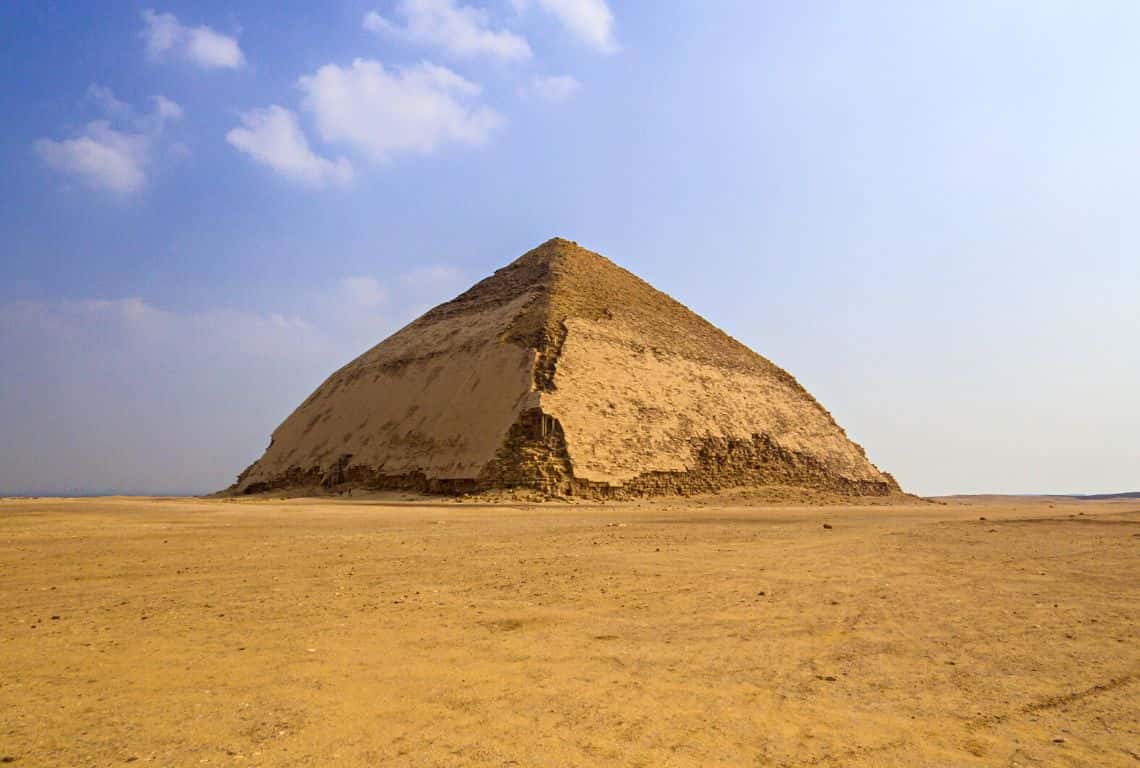
Bent Pyramid in Dahshur / Day Trip from Cairo to Dahshur, Memphis, and Saqqara
The Bent Pyramid was the first pyramid built at Dahshur. It was built around 2600 BC under the rule of Pharaoh Sneferu.
Unfortunately, it proved to be an unsuccessful attempt at building a smooth-sided pyramid. The structural weight calculations of the pyramid placed on the soft ground proved to be erroneous and the different blocks used for building the pyramid were not distributed appropriately causing the angle of the pyramid to be off.
So, if you look at the pyramid you can see that the bottom 147-foot section was built at a steeper 54-degree angle, while the top section was finished at a flatter 43-degree angle.
Nevertheless, it is an amazing architectural achievement and something to marvel at.
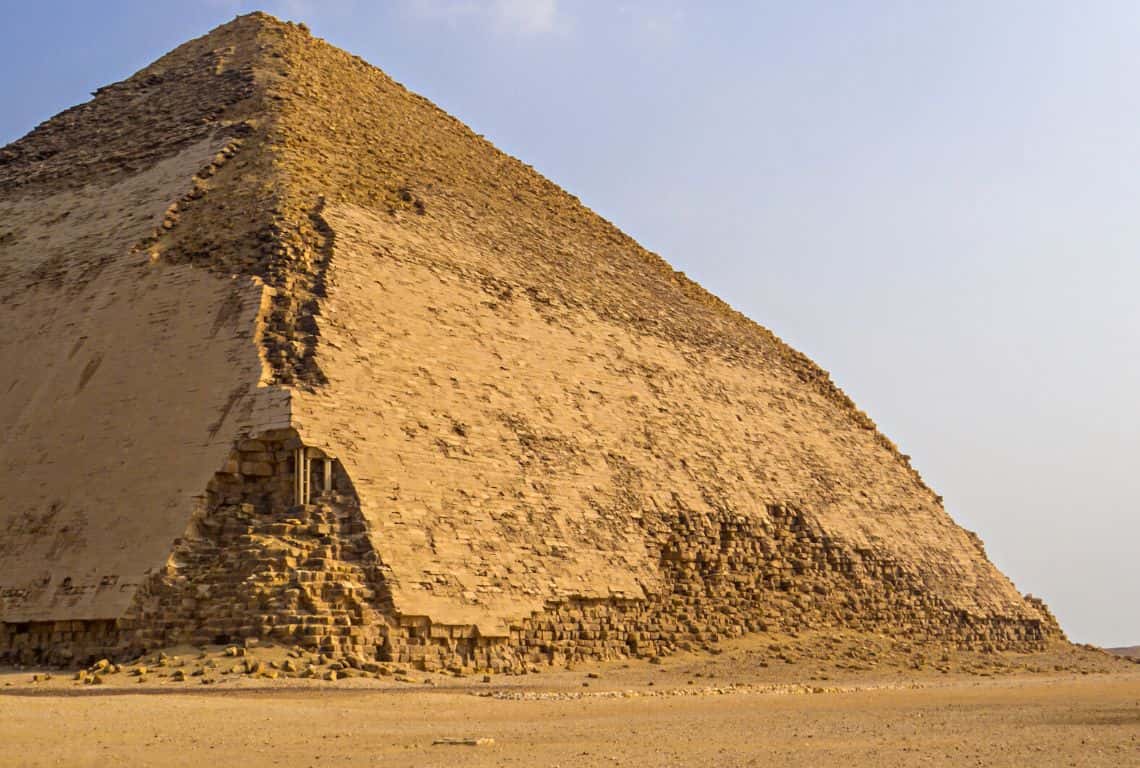
Bent Pyramid in Dahshur / Day Trip from Cairo to Dahshur, Memphis, and Saqqara
GOOD TO KNOW: What is really cool is that you can get inside the pyramid! You will be able to get to its two chambers through a narrow approximately 79-meter (259-foot) tunnel. However, I need to mention that the tunnel is rather narrow and it changes its elevation at steep angles. Needless to say, make sure you are up to it!
PRO TIP: If you are claustrophobic or have any breathing problems, then it would be wise not to go inside either the Bent Pyramid or the Red Pyramid. The tunnels are long and narrow with poor lighting and no ventilation.
In addition, you need to be in fair physical shape to be able to climb the staircases at sharp angles.
The Red Pyramid
Next is the Red Pyramid! It is the third-largest pyramid in Egypt. Its reddish hue, which gives it its name, is the result of the local limestone used in its construction.
However, as my tour guide told me, the pyramid was not always red! Actually, its color was white, since it was covered with the most exquisite Tura limestone.
PRO TIP: Dahshur’s remote desert location adds an air of isolation and serenity to the experience. As you approach the pyramids, you’ll be struck by the stark contrast between the modern world and the timeless sands that cradle these ancient structures.
The Red Pyramid is named for its reddish color which comes from the red limestone that was used for its construction. However, as my tour guide told me, the pyramid was not always red! Actually, its color was white, since it was covered with the most exquisite Tura limestone.
You can still see some of these stones at the pyramid’s base. Unfortunately, most of the Tura limestone was taken and used for buildings in Cairo. As a result, the red limestone was revealed.
What is Tura limestone?
- Tura was the primary quarry for limestone in ancient Egypt.
- The limestone from Tura was the finest and whitest of all the Egyptian quarries, so it was used for facing stones for the richest tombs.
- The Tura limestone was deep underground and instead of open-pit mining, the miners tunneled deep underground to cut large stones out, leaving some limestone behind to support the caverns left behind.
Source: Wikipedia
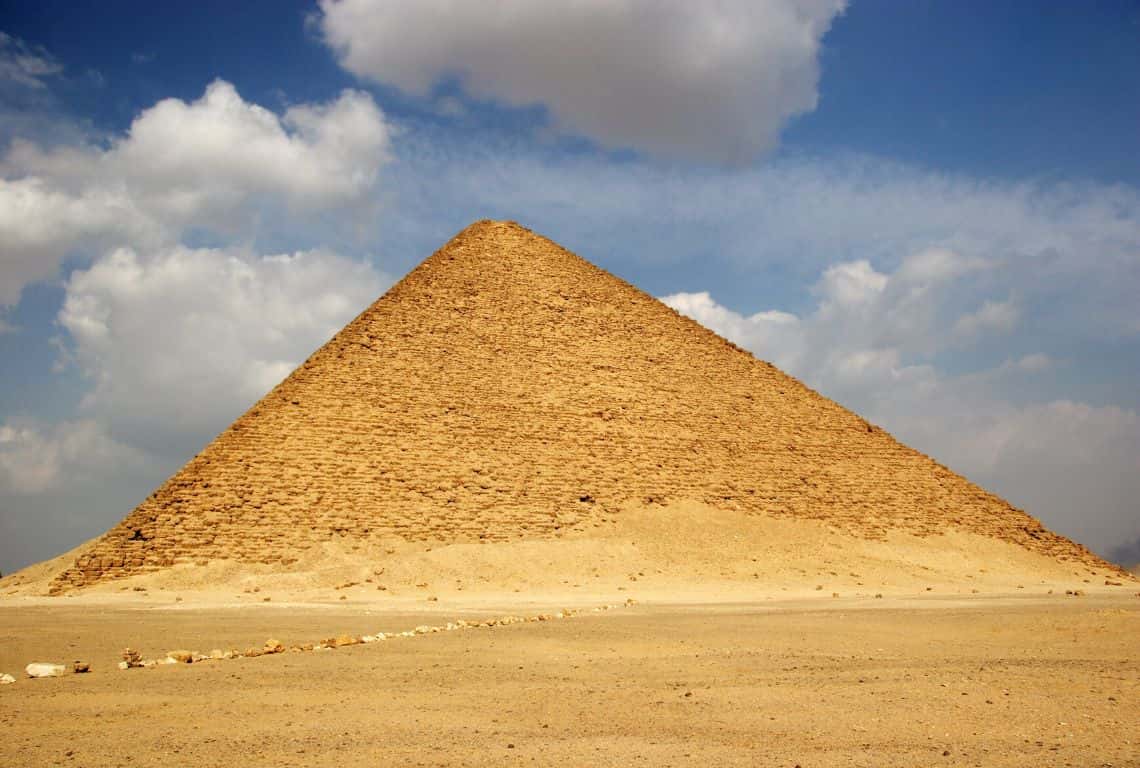
Bent Pyramid in Dahshur / Day Trip from Cairo to Dahshur, Memphis, and Saqqara
The Red Pyramid was built at a 43-degree angle. It is at the same angle as the upper portion of the Bent Pyramid was built. If you look at it, you can see that it has a somewhat stumpy appearance compared to the other Egyptian pyramids. However, what is important here, is that it was the first successful construction of a smooth-sided pyramid.
You can go inside the pyramid through the entrance cut high on the north side of the pyramid.
The Red Pyramid is renowned for its well-preserved interior chambers, offering a glimpse into the ancient burial customs of Egypt. However, the tunnels inside the pyramids are narrow with no ventilation.
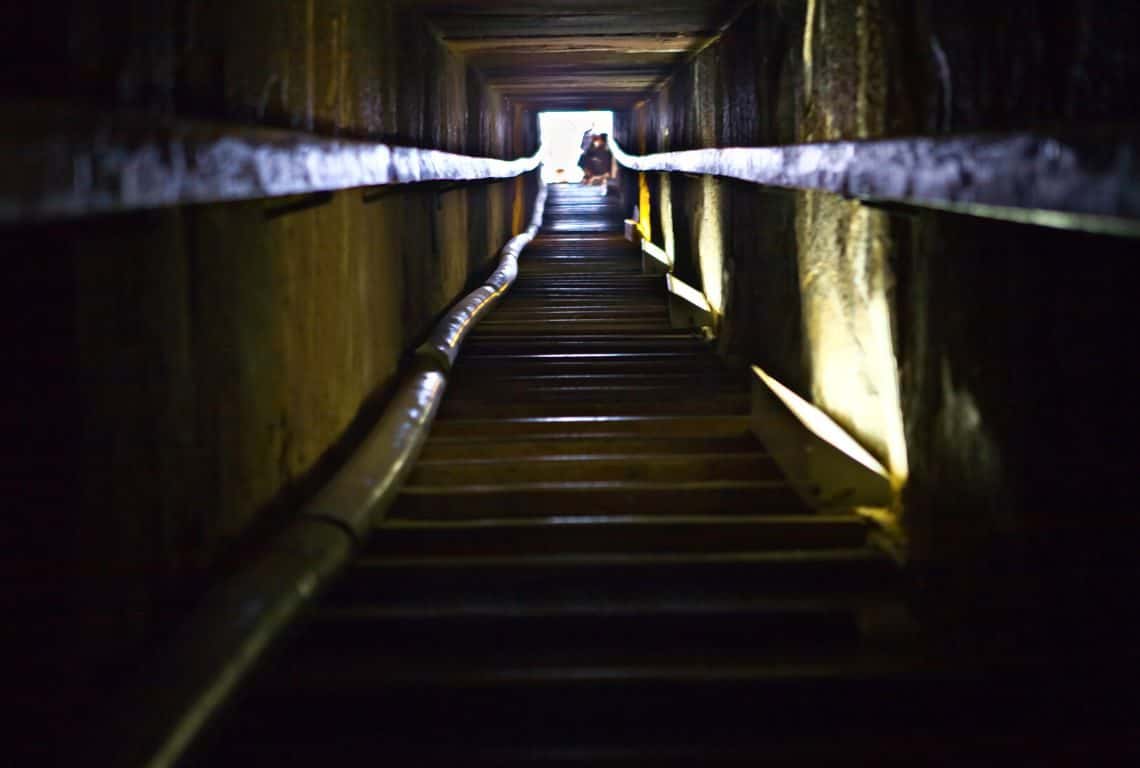
Tunnel in Red Pyramid / Day Trip from Cairo to Dahshur, Memphis, and Saqqara
The opening hours of the Dahshur Archaeological Site are from 9 am till 5 pm and the cost of the entrance ticket is 60 EGP (parking costs 10 EGP).
Also, if you want to use your camera inside the pyramid, then you will need an additional ticket, which costs 300 EGP. However, if you just use your iPhone to take pictures inside the pyramid, then there are no additional charges.
Memphis: Tracing Egypt's Ancient Capital
Our journey through Egypt’s historical tapestry continues as we make our way to Memphis, the ancient capital that once stood as the epicenter of pharaonic power and culture.
While Memphis may have lost its political prominence over the millennia, its legacy endures in the form of colossal statues that whisper tales of a bygone era.
Image Credit: Map data ©2020 ORION_ME
Memphis is the English name for the present-day site of one of the great ancient capital cities of Egypt. It is believed that the city of Memphis was founded at the time of the unification of Upper and Lower Egypt around 3100 BC by the Pharaoh Narmer, who was the first pharaoh of the first dynasty.
The location of Memphis was very strategic. It sat at the entrance to the Nile River Valley near the Giza plateau. It is believed that it was Egypt’s nucleus of commerce and trade distributing food and merchandise throughout the kingdom.
In addition, Memphis served as an important religious center and a worship place of the god Ptah.
Today, what is left of the ancient city is collected and displayed at the Memphis Open Air Museum.
The Giant Alabaster Sphinx
The giant alabaster sphinx dates back to the New Kingdom and it is still standing at the original spot guarding the entrance to what was once the temple of god Ptah.
It is estimated that it weighs more than 80 tons.
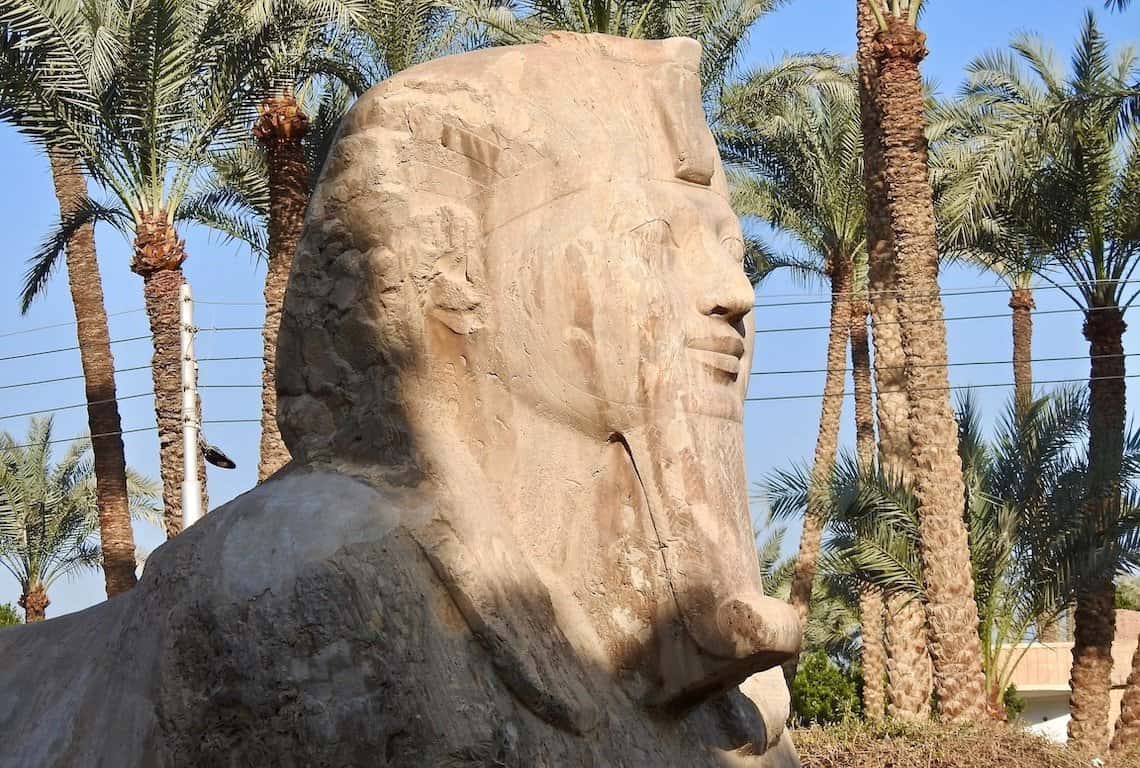
The Giant Alabaster Sphinx in Memphis / Day Trip from Cairo to Dahshur, Memphis, and Saqqara
The Fallen Colossal Statue of Ramses II
Now, make sure not to miss the indoor museum housing the magnificent fallen colossal limestone statue of Ramses II. I think for me, that was the highlight of the tour of Memphis.
The statue is amazing, and you need to see it to appreciate the sublime details!
My guide told me the statue is 10 m (33 ft) tall. It was discovered by Giovanni Caviglia in 1820 near the entrance to the great temple of god Ptah.
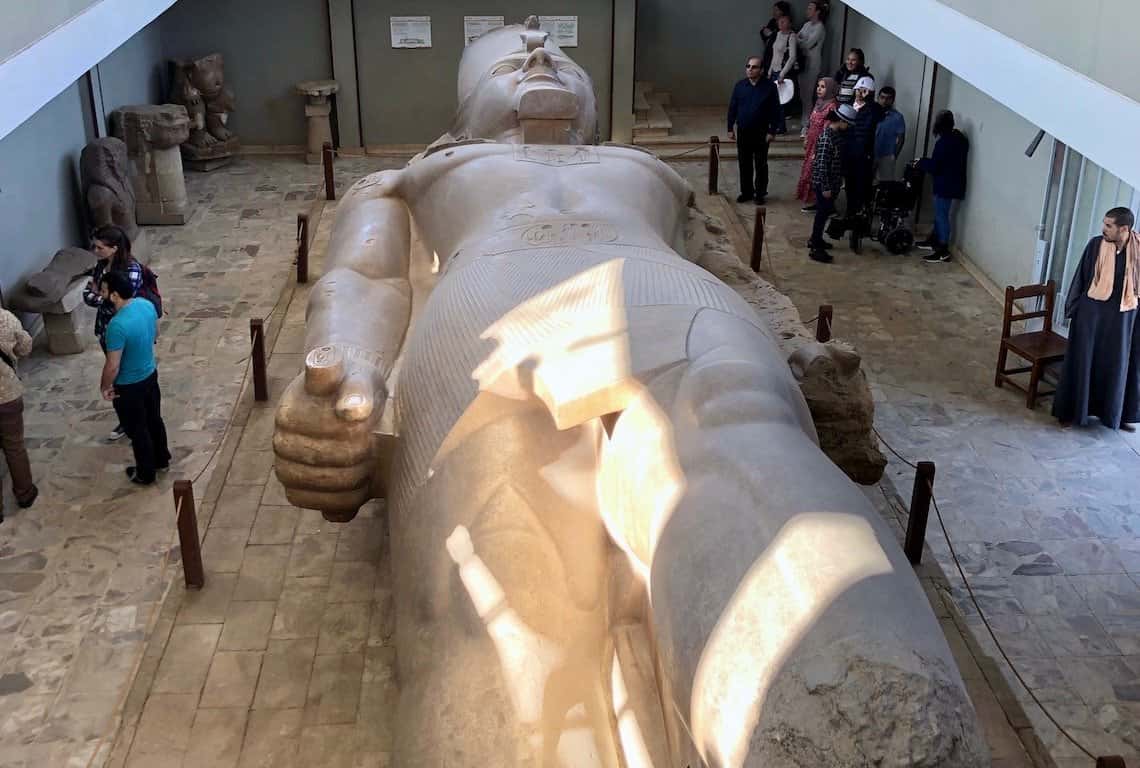
The Giant Alabaster Sphinx in Memphis / Day Trip from Cairo to Dahshur, Memphis, and Saqqara
The Granite Coffins, Commemorative Tablets, and Statues
Take your time and meander around the Open Air Museum in Memphis.
What caught my attention were very impressive statues of Ramses II.
In addition, my tour guide pointed out to me the statue of the triad of Memphis which includes the great god Ptah, his wife Sekhmet, and their son Nefertum. However, I was told that the sculpture depicting Nefertum was replaced with that of Ramses II.
Also, at the Memphis Open Air Museum, I saw the statues depicting the goddess Hathor. I spotted that same statue many times while touring Egypt.
Goddess Hathor was usually represented as a female figure with the ears of a cow.
Hathor was a major goddess in ancient Egyptian religion who played a wide variety of roles.
- As a sky deity, she was the mother or consort of the sky god Horus and the sun god Ra, both of whom were connected with kingship, and thus she was the symbolic mother of their earthly representatives, the pharaohs.
- She was one of several goddesses who acted as the Eye of Ra, Ra’s feminine counterpart, and in this form, she had a vengeful aspect that protected him from his enemies.
- Her beneficent side represented music, dance, joy, love, sexuality and maternal care, and she acted as the consort of several male deities and the mother of their sons. These two aspects of the goddess exemplified the Egyptian conception of femininity.
- Hathor crossed boundaries between worlds, helping deceased souls in the transition to the afterlife.
Source: Wikipedia
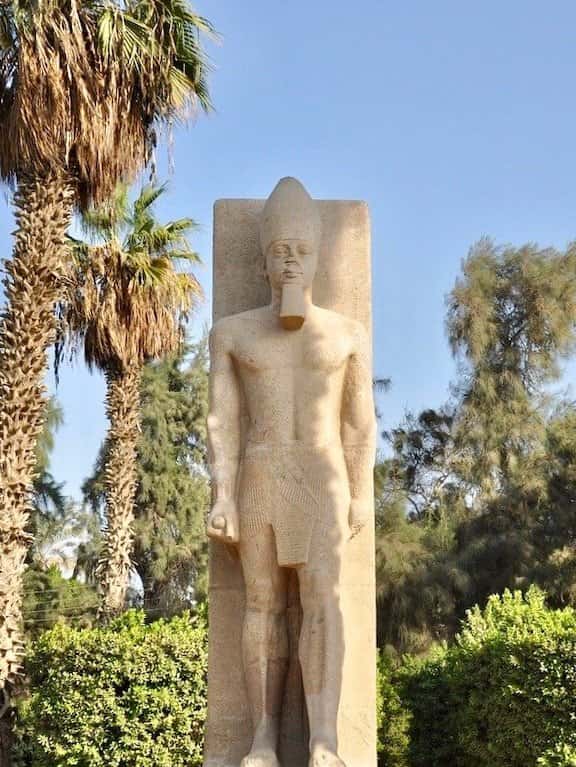
Statue of Ramses II in Memphis / Day Trip from Cairo to Dahshur, Memphis, and Saqqara
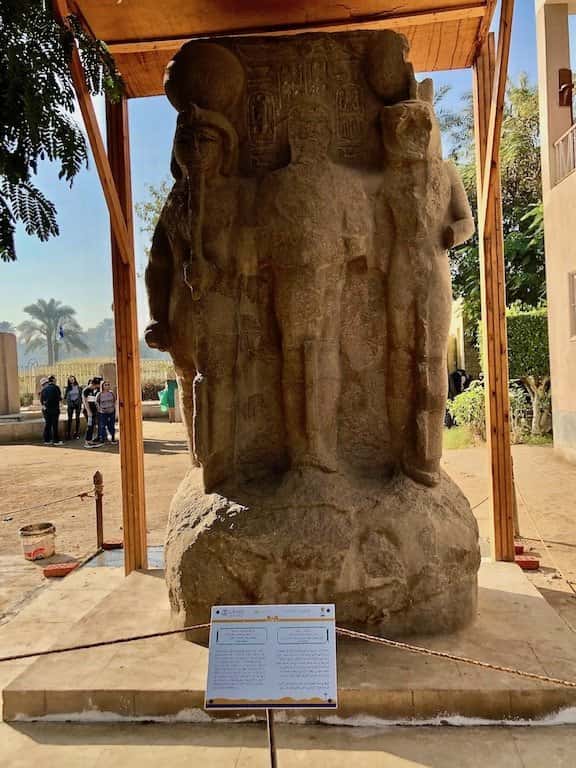
The statue of Triad of Memphis / Day Trip from Cairo to Dahshur, Memphis, and Saqqara
The opening hours of the Memphis Open Air Museum are from 8 am till 4 pm.
The cost of the entrance ticket is 80 EGP. The entrance ticket covers the indoor museum which houses the fallen statue of Ramses II.
Memphis’ decline in significance over time mirrors the ebb and flow of civilizations throughout history. Yet, its enduring monuments stand as a testament to the enduring spirit of an ancient people.
Memphis, with its colossal remnants and echoes of grandeur, provides a bridge between the architectural wonders of Dahshur and the necropolis of Saqqara. As we depart from this once-mighty capital, we carry with us a deeper understanding of Egypt’s storied past, ready to delve further into the mysteries that await in Saqqara, our next destination.
Saqqara: Unveiling Egypt's Oldest Pyramid and Necropolis
Our journey through Egypt’s storied past reaches a crescendo as we arrive at Saqqara, a sprawling necropolis that houses the world’s oldest pyramid, the Step Pyramid of Djoser.
This ancient burial ground, stretching over six kilometers of desert sands, is a testament to the enduring reverence the ancient Egyptians held for their departed souls.
Image Credit: Map data ©2020 ORION_ME
Saqqara, also spelled Sakkara or Saccara in English, is the vast necropolis site of the ancient capital city of Memphis. And, this is the place where the building of pyramids first began in Egypt.
As you step into Saqqara’s timeless landscape, you will discover a world where time seems to stand still, and every stone tells a story.
There is a lot to see at the Saqqara Archaeological Site, however, I recommend that you start your tour of Saqqara at the Imhotep Museum.
The Imhotep Museum
The Imhotep Museum is named in honor of the Egyptian architect Imhotep who is credited with designing the famous Step Pyramid of Djoser as well as the whole complex around the pyramid.
It is a great starting point for visiting the Saqqara Archaeological Site.
You will be able to see archaeological findings from various excavations in Saqqara.
The Step Pyramid of Djoser
The crowning jewel of Saqqara is undoubtedly the Step Pyramid of Djoser, an architectural masterpiece that predates the more famous pyramids at Giza.
Built under the guidance of the visionary architect Imhotep, it marked a pivotal moment in the evolution of pyramid construction. It is 60 meters high (204 feet) and consists of six steps.
In addition, as my guide told me, the Step Pyramid of Djoser is the oldest surviving stone building in the world! It was built in the period from 2630 to 2611 BC.
The Step Pyramid’s intricate design, resembling a series of stacked mastabas (rectangular tombs), showcases the innovative thinking that revolutionized pyramid architecture. This pyramid, dedicated to Pharaoh Djoser, is an iconic symbol of ancient Egyptian engineering prowess.
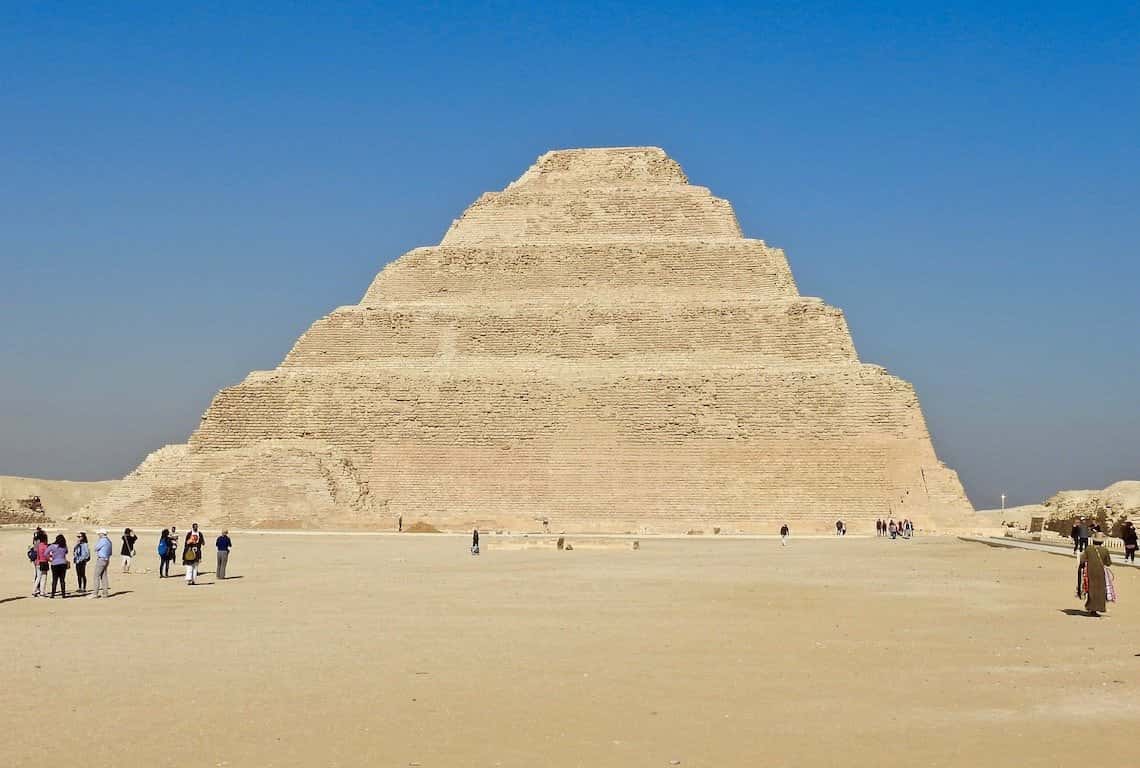
The Step Pyramid of Djoser / Day Trip from Cairo to Dahshur, Memphis, and Saqqara
The Step Pyramid Funerary Complex
Saqqara is not just about pyramids; it is a vast necropolis with numerous mastaba tombs. These rectangular structures, resembling benches, were the precursors to the pyramids and served as the final resting places for nobles and officials.
Exploring the labyrinthine passages and chambers within these mastabas offers a glimpse into the elaborate burial customs and beliefs of the ancient Egyptians. The hieroglyphs and intricate reliefs adorning the walls tell tales of the deceased and their journey to the afterlife.
The complex was surrounded by a wall. And, interestingly, as my guide told me, the wall had 13 false doors which were cut into the wall. In addition, there was a trench surrounding the wall. All of this was to protect, defer, and discourage any invading intruders.
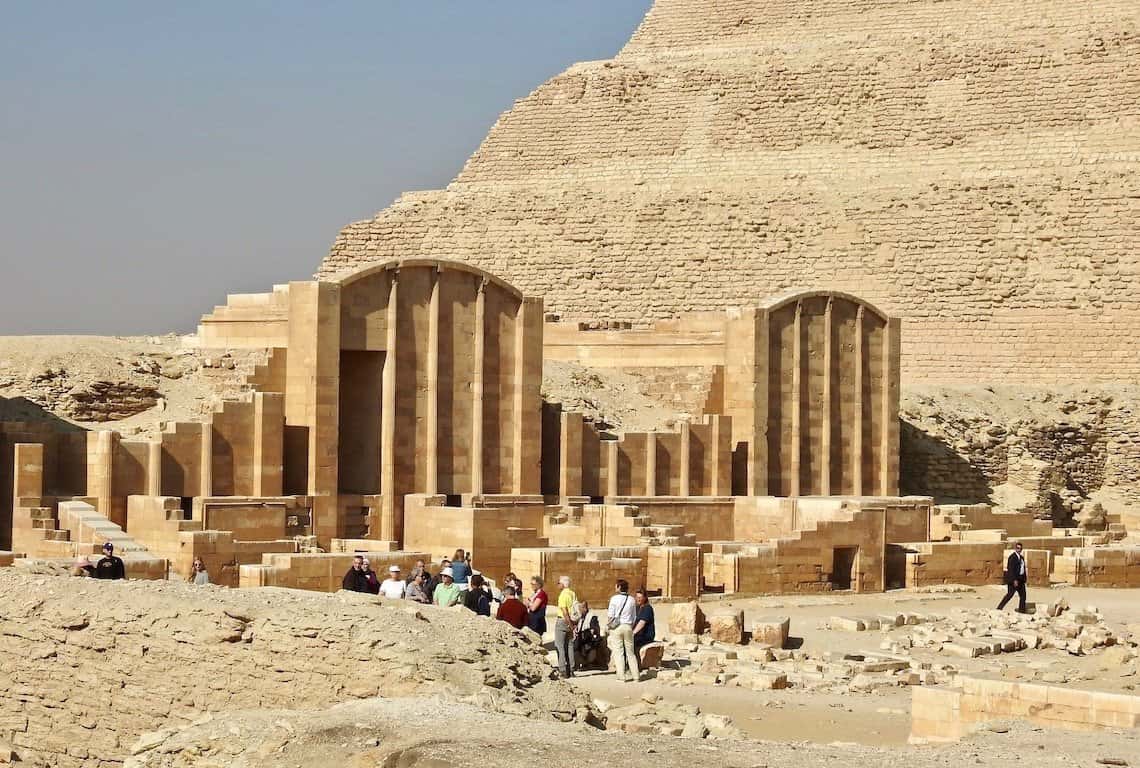
The Step Pyramid Funerary Complex / Day Trip from Cairo to Dahshur, Memphis, and Saqqara
The Tomb of Ka-gmni
Nestled within the archaeological wonders of Saqqara, the Tomb of Ka-gmni stands as a testament to the opulence and status of an elite figure from Egypt’s Old Kingdom.
As we delve deeper into the enigmatic landscapes of Saqqara, let’s uncover the stories and secrets held within this ancient burial site:
- Ka-gmni, whose name translates to “Ka is protected,” was a high-ranking official during the Old Kingdom. His tomb attests to his significant status and the honor bestowed upon him by the pharaohs of his time.
- The intricate reliefs and inscriptions within the tomb provide a window into Ka-gmni’s life and role in ancient Egyptian society. These visual narratives capture scenes of daily life, rituals, and offerings. You will be able to see scenes depicting fishing and fowling.
However, what caught my attention were splendid depictions of birds and animals. Make sure not to miss the beautiful reliefs of offerings bearers.
- The Tomb of Ka-gmni showcases remarkable architectural precision and sophistication. Its design includes a series of well-planned chambers, corridors, and an elegant entrance, emphasizing the importance of preserving the deceased’s journey to the afterlife.
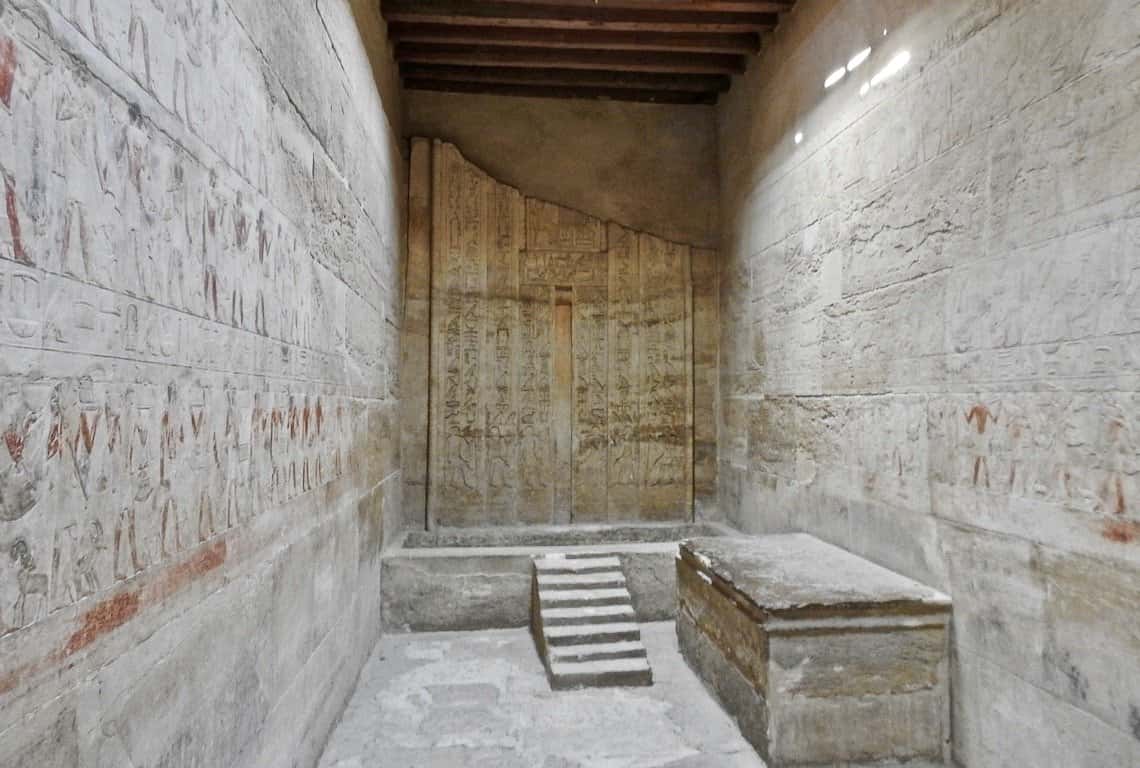
The Tomb of Ka-gmni in Saqqara / Day Trip from Cairo to Dahshur, Memphis, and Saqqara
Saqqara site is open daily for visitors. In the summer (May through August), Saqqara is open from 8 am till 5 pm. During the winter months (September through April), it is open from 8 am to 4 pm.
The cost of the entrance ticket is 180 EGP. The entrance ticket covers both, the Saqqara Archaeological Site and the Imhotep Museum.
Intrepid Scout's Tips for DIY Day Trip from Cairo to Dahshur, Memphis, and Saqqara
- Plan Your Itinerary:
Starting Early: Begin your day trip early to make the most of your time and avoid the midday heat.
Sequential Order: Follow the suggested sequence, starting with Dahshur, then Memphis, and ending with Saqqara for a chronological journey through history.
Time Allocation: Allocate sufficient time for each site to explore at a comfortable pace.
- Transportation Options:
Private Guide and Driver: If budget allows, consider hiring a private guide and driver for personalized insights and flexibility.
Guided Tours: Joining a guided tour from your Cairo hotel is a cost-effective option, although it may limit flexibility.
Taxi Ride: If you prefer independence, book a taxi and arrange for guides at each site.
- Dress and Comfort:
Comfortable Clothing: Wear lightweight, breathable clothing and comfortable shoes for walking and exploring.
Sun Protection: Don’t forget sunscreen, sunglasses, and a hat to shield yourself from the sun.
- Hydration and Snacks:
Stay Hydrated: Carry a refillable water bottle to stay hydrated throughout the day.
Snacks: Pack some light snacks to keep your energy up between meals.
- Guided Tours:
Local Guides: Consider hiring local guides at each site. They provide in-depth knowledge and context, enhancing your experience.
Language: Confirm the availability of guides who speak your preferred language in advance.
You Might Also Like:
How to Visit and What to See at KHAN EL-KHALILI BAZAAR in Cairo
Perfect 7-Day Egypt Itinerary for First Visit (Cairo, Aswan, Luxor, Abu Simbel)
What to See at the TEMPLE of HORUS at EDFU (5 Things You Can’t Miss)
What to See at the TEMPLE of KOM OMBO, Egypt (9 Things You Can’t Miss)
How to Visit Abu Simbel: Everything You Need to Know to Plan Your Visit
How to Visit and What to See at the TEMPLE of PHILAE in Aswan
Best Day Trip from Cairo – Dahshur, Memphis, and Saqqara (Maps+Photos)
19 Must-See Things at Egyptian Museum in Cairo (+Practical Tips)
Did You Find This Useful?
Why Not Save Best Day Trip from Cairo to Dahshur, Memphis, and Saqqara to Your Pinterest Board!
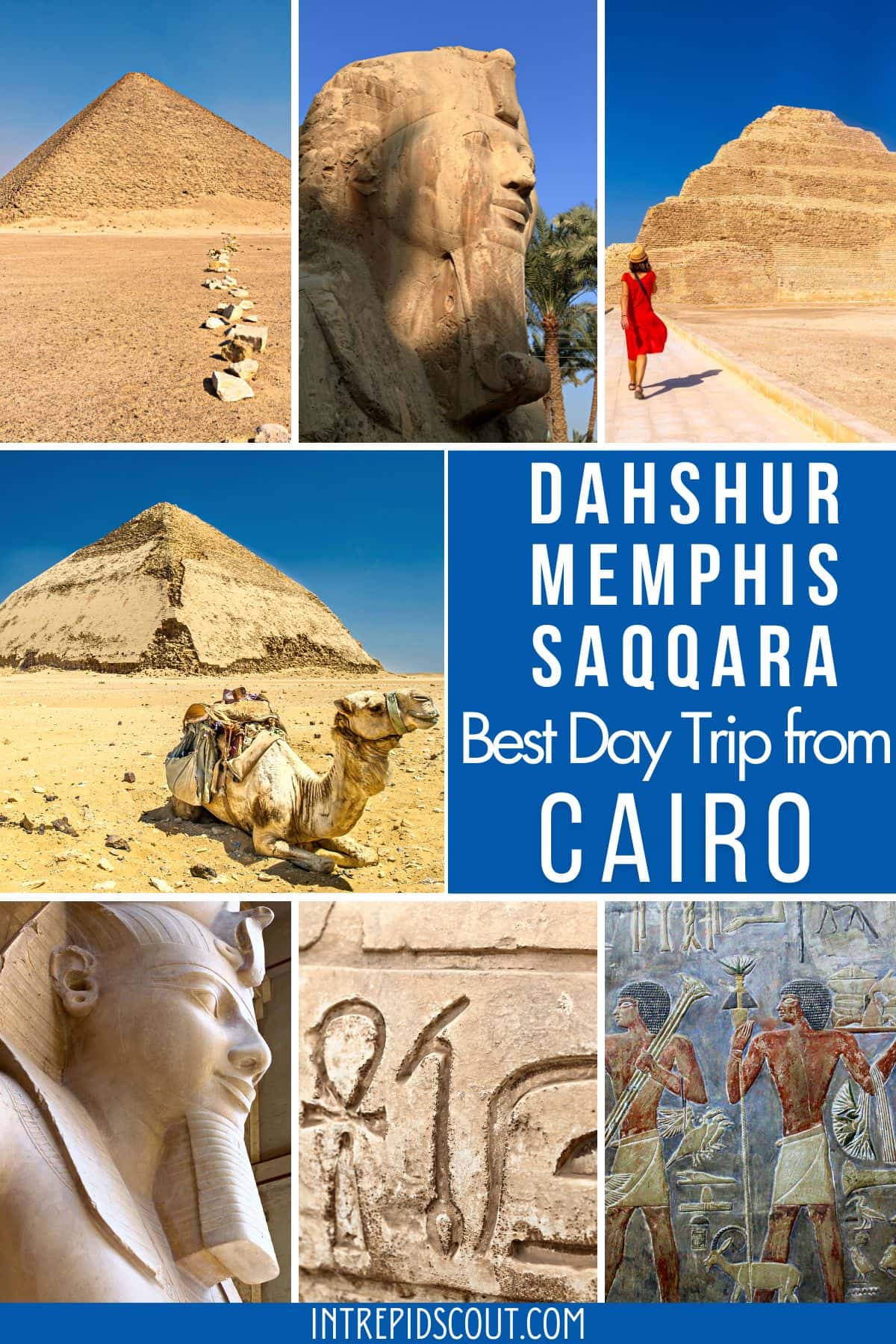

Now, It Is Your Turn, I Would Like to Hear Back from You!
Are you planning on visiting Egypt?
Please let me know! Drop me a quick comment right below!
Also, click on any of the images below to get inspired and to help you with the planning process for your trip to Egypt!
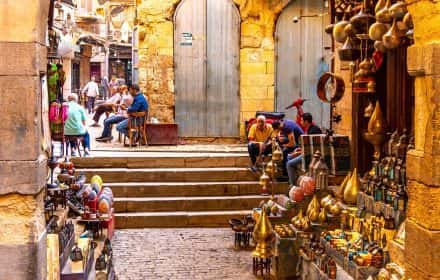
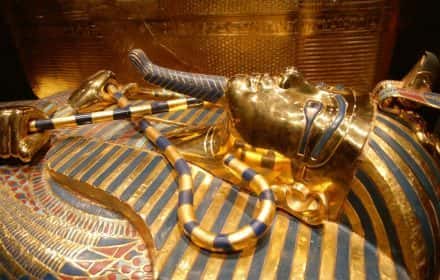
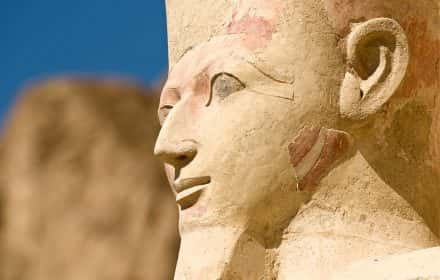
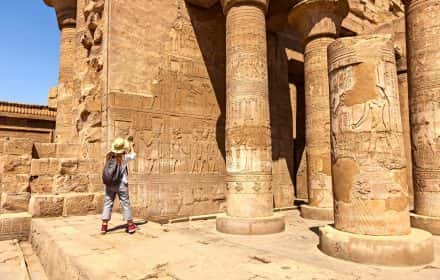
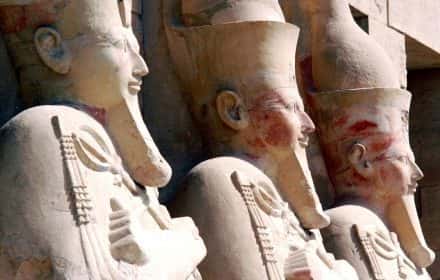
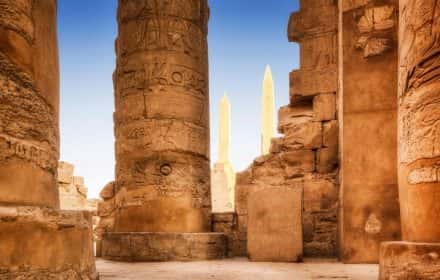
Comments:
6 thoughts on “DIY Day Trip from Cairo to Dahshur, Memphis and Saqqara (Maps+Useful Tips)”
we want to do this day trip (Dahshur/ Memphis/ Saqqara) on Dec 22. Do you have connections to a reliable driver and guide? We will have to be picked up with our luggage from a hotel airport (we are arriving midnight Dec 21/22) and then after the trip we will need to get dropped off at our hotel in Giza. Is this possible?
i want to do the exact Memphis Dahshur Saqqara trip. How did you do it? who can we contact?
Hi, I collaborated with Your Egypt Tours to help me put together an itinerary for Egypt. They supplied drivers and guides, as well as booked a cruise on River Nile for me. On the other hand, I researched and booked all the hotels and flights. Honestly, I recommend them and have to say that they have done a great job! Just to clarify, I am not getting paid for recommending them.
Check my post:https://www.intrepidscout.com/egypt-travel-tips/
Sorry, My comment did not post. I sent you an email as well.
Do you arrange private tours to Dahshur, Memphis and Saqqara? What would it cost to do that for a half day tour from Giza?
Hello,
I do not organize any private tours in Egypt. I can get you in touch with a travel company that I used in the past.
I am sure they will be able to help. Let me know.